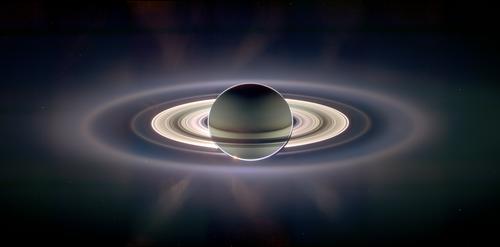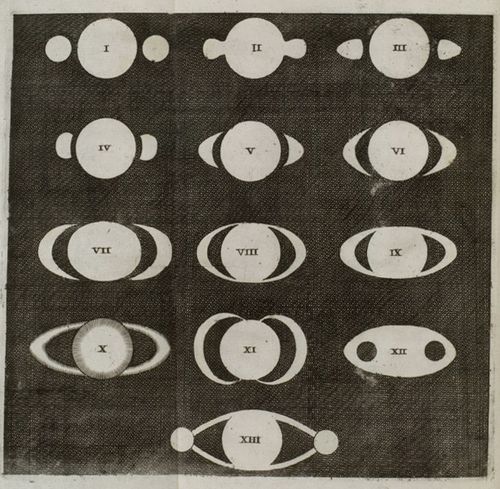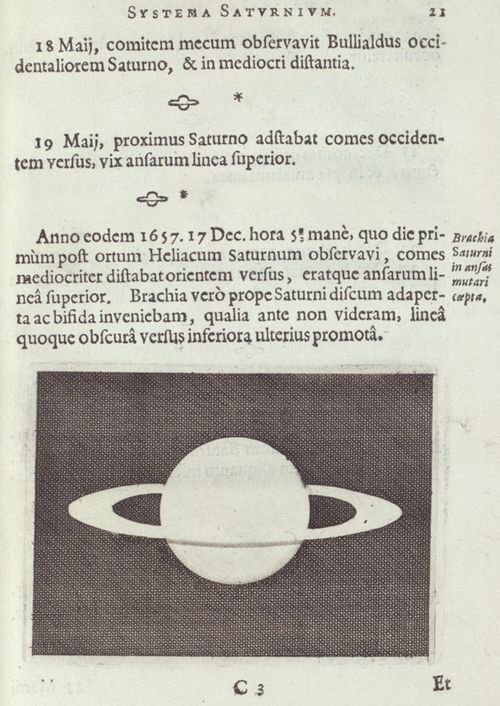JF Ptak Science Books Quick Post
[Image Source Smithsonian Institution, Dibner Library, here: http://www.sil.si.edu/DigitalCollections/HST/Huygens/huygens-ill32.htm]
Christian Huygens (1629-1695) worked across many fields, including astronomy, biology, math and physics, and was extraordinarily productive, making numerous contributions in the physical and theoretical areas, as well as being a prolific author and correspondent.
These images were published in his Systema Saturium..., published in the Hague in 16591, which was his fundamental work on the planet and in which he announces the discovery of its rings--this was a very considerable element, because the "arms" encompassing the planet had been a mystery to a generation of astronomers, from Galileo onward. The roman numerals relate the belief in the structure of the rings according to observer, so I was made by Galileo in 1610, II by Scheiner, 1614; III by Riccioli,1641-1643. IV-VII by Hevelius; VIII and IX by Riccioli, 1648-1650; X by Divini, 1646-1648. XI by Fontana in 1636; XII by Gassendi in 1646, and XIII by Fontana and others from 1644-1645. (This list identifying the rings of Saturn over time come from notes I had taken and misplaced, though the original I am sure comes from published work by Ronald Brashear, head of Special Collections at the Smithsonian.)
Here's Huygen's own beautiful and modern image of the planet, from his page 21 of his work above:
[Source Smithsonian Institution, Dibner Library, here: http://www.sil.si.edu/DigitalCollections/HST/Huygens/huygens-ill32.htm]
And then, here, a more modern image courtesy of the Cassini-Huygens spacecraft;
 [Source: Jet Propulsion Laboratory, here.]
[Source: Jet Propulsion Laboratory, here.]
Notes:
1. From the title page: Christiani Hvgenii ... Systema Satvrnivm; sive, De causis mirandorum Satvrni phænomenôn, et comite ejus planeta nova. Hagæ-Comitis, ex typographia A. Vlacq, (1659).





Comments